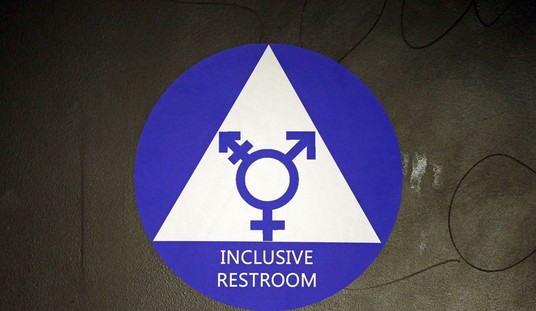While growing up, I had the good fortune to live in two consecutive homes that were each a block away from their town’s respective libraries. From fourth grade through junior high, I had easy access to books, tapes, videos, and even video games available for check out. I spent a lot of time in the library, browsing and grazing, checking out volumes piled higher than I could ever read in the time allotted.
Among those many books were the Star Wars novels of Timothy Zahn. Now known as “the Thrawn trilogy,” they began with 1991’s Heir to the Empire. Set several years after Return of the Jedi, the Thrawn trilogy continued the adventures of Luke Skywalker, Princess Leia, and Han Solo as they fought the remnant of a collapsing Empire and confronted a new disturbance in the Force.
Zahn’s novels triggered an explosion of new Star Wars fiction spanning books, comics, video games, and more. In 1996, collaborators went so far as to develop a “movie without the movie” called Shadows of the Empire. The idea was to create merchandise around a story as if promoting a film. There was a Shadows novel, a video game, and even a fully orchestrated soundtrack for a film which was never actually produced. The story connected the events of The Empire Strikes Back with Return of the Jedi.
In later years, the timeline of this Expanded Universe became jam packed with stories detailing the fates of “the Big Three” along with their friends and offspring. Jacen and Jaina Solo, twin children of Han and Leia, joined their brother Anakin and their nephew Ben Skywalker on perilous and transformative adventures which spanned several stories across many mediums.
So when Disney acquired the Star Wars brand in 2012 and announced plans to produce Episodes VII, VIII, and IX set in a time period well covered by the Expanded Universe, obvious questions emerged. How would they work around the existing stories? How would they present the offspring of Luke, Han, and Leia? How would they tell consequential new stories without trampling upon established lore?
Lucasfilm has finally provided an answer, and it comes in the form of a soft-reboot. Precedent can be found (perhaps not coincidentally) in J.J. Abrams previous major sci-fi refurbish – Star Trek.
With Trek, Abrams and his writing team devised a way to have their cake and eat it too. They used the plot devices of time-travel and parallel universes to effectively reset the Star Trek universe, enabling future stories to take creative new directions without adhering religiously to established canon.
With Star Wars, the approach proves different but no less brutal to established lore. Lucasfilm announced Friday that the Expanded Universe of non-filmed Star Wars entertainment has been officially archived as “Star Wars Legends.” They have deemed only the six film saga and the animated Star Wars: The Clone Wars as official canon. The forthcoming Star Wars Rebels animated series, anticipated later this year, will also be considered canon, as well as all future books, comics, and other material licensed by Lucasfilm. From the announcement:
Now, with an exciting future filled with new cinematic installments of Star Wars, all aspects of Star Wars storytelling moving forward will be connected. Under Lucasfilm President Kathleen Kennedy’s direction, the company for the first time ever has formed a story group to oversee and coordinate all Star Wars creative development.
“We have an unprecedented slate of new Star Wars entertainment on the horizon,” said Kennedy. “We’re set to bring Star Wars back to the big screen, and continue the adventure through games, books, comics, and new formats that are just emerging. This future of interconnected storytelling will allow fans to explore this galaxy in deeper ways than ever before.”
… While the universe that readers knew is changing, it is not being discarded. Creators of new Star Wars entertainment have full access to the rich content of the Expanded Universe. For example, elements of the EU are included in Star Wars Rebels.
It’s a bold move which was arguably necessary to make way for Disney’s stewardship of the brand. Collaborators will be free to explore the Star Wars universe in new and unpredictable ways without having to navigate a labyrinthine fictional history which most people don’t know about anyway. If you don’t alright know who the Yuuzhan Vong are, you probably don’t care.
Any media franchise which survives for decades eventually undergoes some kind of refurbish. What would the James Bond films look like if they never recast the character or updated his world? Imagine if we were bound to Joel Schumacher’s version of Batman. Bryan Singer’s forthcoming X-Men: Days of Future Past stands to “clean up” much of that franchise’s frayed continuity. Anytime you have multiple teams of creative minds cooking in the same narrative kitchen, continuity errors will emerge and reboots will become inevitable.
The prequel films also provide some precedent for disregarding the Expanded Universe. Boba Fett had an arguably more fitting back-story long before Lucas refashioned him into the ten-year-old clone of a failed Kiwi mercenary. The ways of the Force were far more mysterious before the advent of midichlorians. And Obi-Wan Kenobi was trained by Master Yoda long before anyone heard of Qui-Gon Jinn.
That said, perhaps a hard reboot would prove less confusing. As it stands, fan immersion may be adversely affected by trying to keep track of what has survived to be canon and what has faded into “Legend.”









Join the conversation as a VIP Member